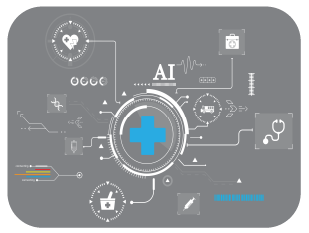The rise of smart technologies has revolutionized every aspect of modern life, bringing convenience, speed, and efficiency. Artificial intelligence (AI), machine learning, big data analytics, and the Internet of Things (IoT) are key pillars of this transformation. Together, they drive innovation and value creation across industries like manufacturing, logistics, business operations—and increasingly, healthcare. This wave of technological advancement is often referred to as the Fourth Industrial Revolution (4IR).
Healthcare Joins the Digital Revolution:
In the healthcare sector, the integration of advanced technologies is helping improve service quality, patient outcomes, and resource efficiency. Radiology, in particular, has seen significant benefits. AI-powered tools assist radiologists by processing large volumes of imaging data using advanced algorithms, improving diagnostic accuracy, standardizing imaging, and easing the workload on healthcare staff.
Major players in medical imaging, technology companies, and startups are working together to bring cutting-edge innovations into clinical settings. A prime example is Intel’s commitment to enabling high-performance solutions for CT scans, MRIs, and other imaging modalities, aimed at accelerating workflows and unlocking the potential of AI in healthcare.
AI at the Point of Care: Faster Diagnoses, Smarter Triage
Radiology plays a crucial role in guiding patient treatment, especially in time-critical cases. However, limited radiologist availability and growing image volumes can delay diagnoses. AI tools are being embedded into mobile X-ray systems to streamline workflows and prioritize urgent cases.
For instance, AI algorithms now automatically orient X-ray images and check for common errors like a clipped lung during acquisition—while the patient is still present. This reduces the need for retakes and saves time. More importantly, AI can detect subtle abnormalities and flag critical findings for immediate review by radiologists, allowing for faster and more accurate decision-making.
Streamlining MRI Scans with AI
Neuroimaging, particularly brain MRI, is used to diagnose and monitor diseases over time. Traditionally, setting up scans requires manual slice selection by technologists, which can be time-consuming and inconsistent. This affects the reproducibility of results in longitudinal studies.
To address this, AI-driven automation tools now help standardize scan alignment, reduce setup time, and improve consistency across patient visits. These tools ensure that scans are taken from the same angle and depth, reducing variability and increasing diagnostic confidence—while also minimizing the chance of patient recalls.
Enabling Flexible Scalable Radiology Workflows
Advanced technologies are also changing where radiologists can work. AI-enabled visualization software, once confined to individual imaging systems, is now available enterprise-wide via cloud or server-based platforms. These solutions allow multiple users to access and process imaging data from any location.
This shift supports flexible, remote work environments and enhances collaboration between clinicians. It also improves resource utilization by maximizing access to equipment and expertise—ultimately boosting department efficiency and easing stress on staff.
Driving Sustainable Efficiencies with AI
As AI tools become more integrated into radiology workflows, they continue to deliver improvements in efficiency, accuracy, and clinical outcomes. Automated decision support, consistent imaging protocols, and faster processing contribute to better patient care and optimized resource management.
References
[1] Lee D, Yoon SN. (2021). Application of Artificial Intelligence-Based Technologies in the Healthcare Industry: Opportunities and Challenges. Int J Environ Res Public Health, 18(1):271. doi:10.3390/ijerph18010271
[2] Dinov ID. (2011). Neurological imaging: statistics behind the pictures. Imaging Med, 3(4):423–432. doi:10.2217/iim.11.37




